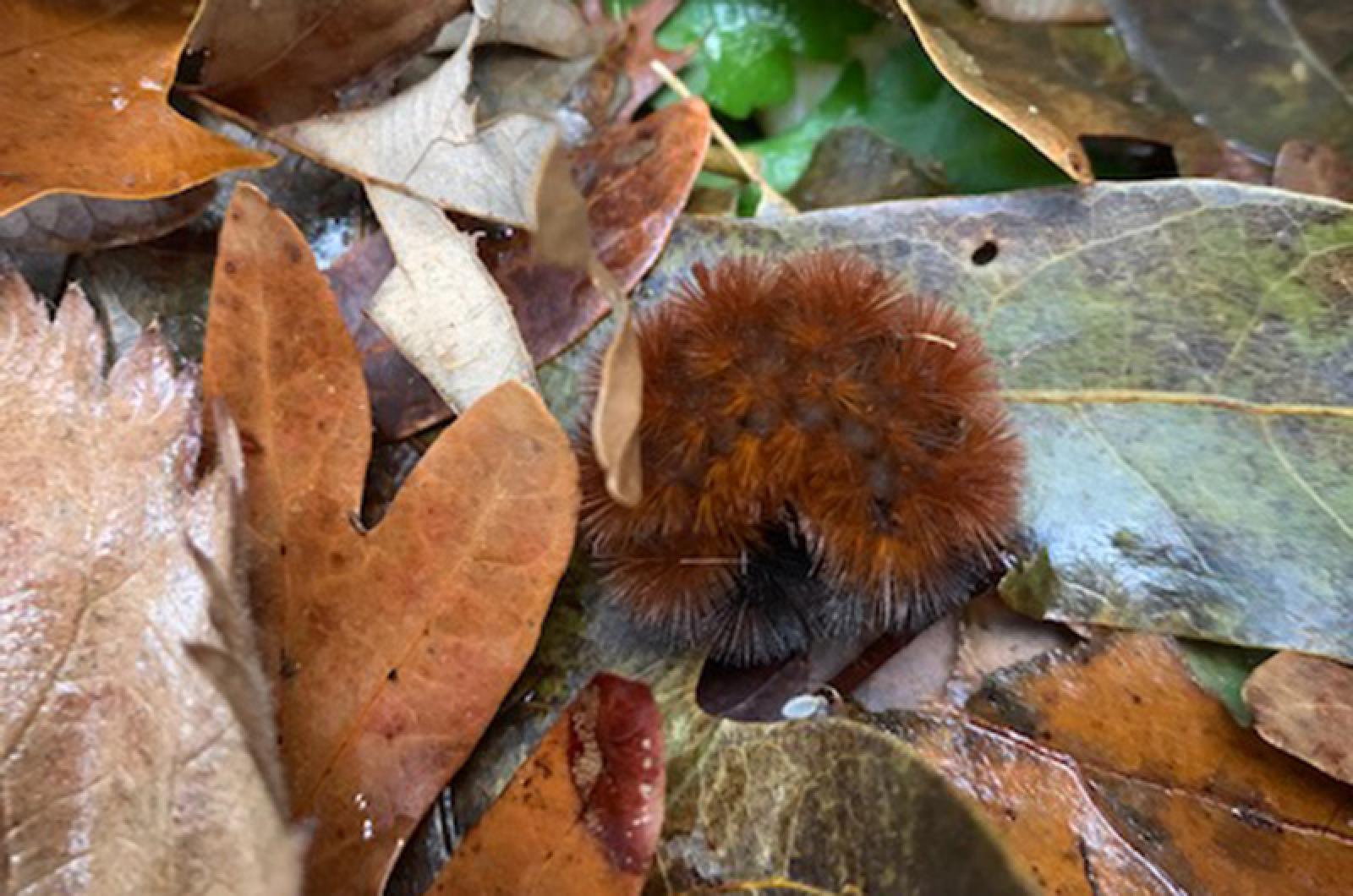If you can’t bear the thought of a harsh winter, avoid this fall forecaster.
The banded woolly bear caterpillar might have good news or bad news for you, depending on your seasonal preferences and your ability to read its signs. Long known for its premonition potential, this crawler’s colors tell not so much the future but the past.
Each caterpillar has 13 segments that vary in thickness and hues. On each side of the worm is a succession of black segments, separated in the middle by a rusty red-brown section. The segments vary in width. Folklore suggests that the wider the rusty section, the milder the winter; wider black sections imply a severe winter.
However, this is not the only method of prediction for the woolly bear. A more modern method suggests a gambling game and a roll of the dice for finding out the future.
Like the Groundhog Day traditions in February, this is apparently all in fun and, if done carefully, no wildlife will be harmed. In this case, the dice, or, more grammatically correct in the singular, die, is the woolly bear.
When this caterpillar is caught, it will roll up in a ball. Pick up the curled creature, shake, blow and roll it gently on the ground. After uncurling, if it crawls east or west, an average winter will come. A northern crawl signifies mild weather. But beware a south-crawling beast! Trouble ahead.
What would Al Roker think? Or Punxsutawney Phil? Not to worry: the woolly bear isn’t any more accurate than they are.
The science behind the color variation has more to do with weathers past than weathers future. The ruddy middle section increases in width with each instar (phase between molting), so a mild autumn would provide for the most growth and widening of the middle red section. Think tree rings, which are wider when the environment is more beneficial.
If the fall weather has been harsh for the caterpillar, and thus its rate of growth has been slow, the red section doesn’t expand as much, leaving the black sections wide. The fall-growing red sections were simply not able to grow and overtake the black (default) sections.
While these caterpillars appear prickly, covered with bristly hairs, they are still very much beloved. There are at least half a dozen festivals and celebrations for the woolly bear. In Ohio, an October Woolly Bear Festival boasts a two-hour parade, a crowned King and Queen Woolly Bear, a Woolly Bear Kids Crawl (five yards for the under one-year-olds, and 550 yards for the 12-year-olds), and even a woolly bear look-alike contest for pets.
Ohio isn’t alone when it comes to woolly bear parties: it is joined by the residents of North Carolina, Wisconsin, Pennsylvania, Wyoming and Ontario in similar celebrations of this wondrous worm. Ontario? Yes, that is part of the creature’s northern range.
In autumn, these bears are on the move and can be seen just about anywhere from roadsides to yards, fields and woods as they finish out their active period before a dormant winter. Woolly bear caterpillars overwinter tucked away in cracks, crevasses and among leaves.
You have to admire their tenacity in the face of our New England winters. They survive here and elsewhere because of an antifreeze-like compound, which keeps them in suspended animation. Spring brings their revival and eventually a metamorphosis into an Isabella tiger moth.
A word of winter warning and warming: if you find a woolly bear caterpillar during its period of repose, resist the urge to handle it: the heat from your hands can bring it out of its hibernation — a possible death sentence for the poor creature in the midst of winter.
So don’t let this supposed Farmer’s Almanac caterpillar pull the wool over your eyes. Bear witness to its record of the past, not the future — and join it in hunkering down and facing both together, no matter what they bring.
Suzan Bellincampi is islands director for Felix Neck Wildlife Sanctuary in Edgartown and the Nantucket Wildlife Sanctuaries. She is also the author of Martha’s Vineyard: A Field Guide to Island Nature and The Nature of Martha’s Vineyard.




Comments
Comment policy »